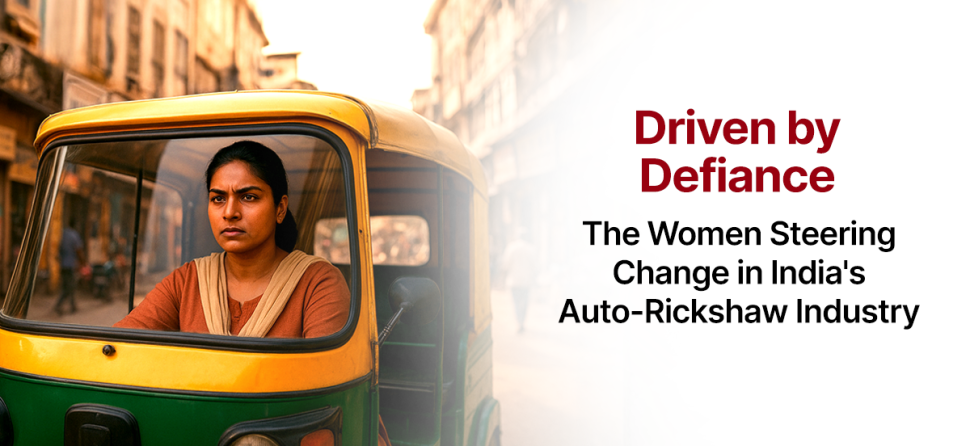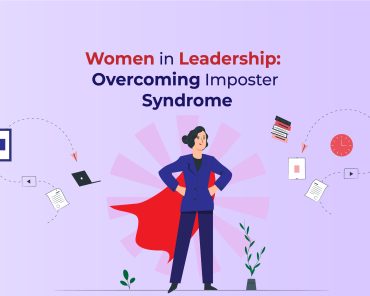By ayoti
Driven by Defiance – The Women Steering Change in India’s Auto-Rickshaw Industry
The ever-busy streets of India are a spectacle of sounds, colours, and ceaseless activity—a place where auto-rickshaws zip past monuments, markets, and temples, weaving through a tapestry of tradition and modernity. In these lanes and avenues, an extraordinary revolution is unfolding. Women, long expected to occupy predetermined roles, are now stepping up as drivers, steering auto-rickshaws through cities from Jaipur to Chennai. Their emergence in this male-dominated field marks not only a shift in who drives but a profound reimagining of what women can accomplish in public spaces.
The Gendered Landscape of Indian Transportation
For years, the very sight of a female auto-rickshaw driver was nearly unimaginable in many Indian cities. Public and commercial transport was an almost exclusively male preserve, policed by social convention and real safety concerns. Many women lacked mobility due to societal norms, limited education, financial dependence, and the absence of female role models in visible professions.
The barriers were formidable. In 2010, a study found that less than 1% of registered commercial drivers in India were women. Unions—essential for collective bargaining—rarely accepted women, and there were few legal protections against workplace harassment. Most tellingly, women who wanted to drive rickshaws faced family resistance, suspicion from male colleagues, and scepticism from passengers.
New Initiatives: Driving Change
Gradually, change was initiated by a combination of economic necessity, advocacy, and targeted programs. The Pink City Rickshaw Company in Jaipur has become a beacon for other cities and organisations. Founded by ACCESS Development Services, this non-profit program helps women learn to drive, repair, navigate, provide basic customer care, and improve their English skills. Upon completion, drivers receive official licenses, uniforms, and join a collective that guarantees safety and support.
Poonam Devi, who switched her traditional attire for the company’s uniform, recalls the shock and excitement of her first solo drive. “People still stare, but now some approach with curiosity and admiration,” she says. More than 200 women have been trained and are now earning steady incomes, ferrying local commuters and tourists.
Modern Trailblazers and Their Stories
The movement is not limited to Jaipur. In Chennai, the Veera Pengal Munnetra Sangam (Heroic Women’s Advancement Collective) has unified women drivers under a single banner. Mohanasundari, a former beautician, became an auto driver after her business collapsed during the pandemic. She found empowerment in financial independence and solidarity with fellow drivers. Veterans like Leela Rani, who has navigated Chennai’s streets for over two decades, now advocate for better pay, health coverage, and safe stands.
Meanwhile, in Bengaluru, over 2,000 women have obtained auto-rickshaw licenses. Training programs teach everything from vehicle maintenance to self-defence, helping drivers like Jancy, who was gifted her husband’s vehicle and now proudly calls it her “route to freedom.” Social media influencers have spotlighted drivers such as Safura Khan, whose joyful spirit and professionalism attracted admiration nationwide.
Data and Changing Trends
According to recent research, women now represent an estimated 2-4% of all auto-rickshaw drivers in Tier 1 cities, with the number rising in Tier 2 and 3 urban centres due to expanding programs and more inclusive policies. Chennai alone boasts over 600 active women auto drivers, while many others hold licenses but have yet to take the plunge. Some ride out of necessity—surviving economic shocks or family crises—while others are drawn by the promise of independence, flexible hours, and genuine respect from supportive communities.
Obstacles on the Journey
Yet, despite their growing numbers and visibility, women face constant struggles. Earnings for many drivers fluctuate between Rs. 200 and Rs. 500 daily, and competition from ride-hailing apps often squeezes profits. Harassment—from male passengers, rival drivers, and even traffic police—remains a concern, especially after dark. Infrastructure issues abound, with few clean restrooms near rickshaw stands and little provision for health or child care benefits. Even so, collectives like Veera Pengal fight for change, lobbying politicians and local leaders for fair wages and secure working conditions.
Social and Economic Ripple Effects
For many families, a woman’s income from driving is transformative. It supplements household budgets, ensures continuity during a partner’s illness or unemployment, and sends children to school. During pandemic lockdowns, women auto drivers in Mumbai and Chennai transported doctors, nurses, and essential supplies—often risking their safety to serve their communities. The ripple effects extend beyond economics, challenging gender roles and inspiring daughters to imagine new futures.
The Importance of Representation
The media has finally started to tell these stories. Documentaries, news programs, and films like “Autorsha” (a Malayalam drama about a female auto driver) introduce audiences to the realities—both rewarding and harsh—of this profession. Social media campaigns regularly introduce “rickshaw didis,” giving visibility to their courage and resilience. Representation, both in fiction and fact, helps normalise women in public spaces, making it possible for younger generations to envision themselves at the wheel.
The Road Ahead
Looking forward, experts predict significant growth in women’s participation. If support networks multiply and if governments listen to advocacy groups, hundreds more women may join each year. The shift toward electric autos, safer urban spaces, and gender-sensitive transport policies augurs well for the future. Studies show that increasing female mobility and work participation by just 10% could boost India’s GDP by up to $700 billion by 2025—a clear argument for continued investment in such initiatives.
Conclusion
Ultimately, the journey of India’s female auto-rickshaw drivers is about more than traffic and fares. It is a story of claiming space, challenging stereotypes, and inspiring possibility. With every kilometre, these women push social boundaries, proving that change is not only possible but inevitable when driven with determination, resilience, and ambition. As they steer their rickshaws down city lanes, they drive not just themselves and their passengers but their nation toward a future of equality and opportunity.





